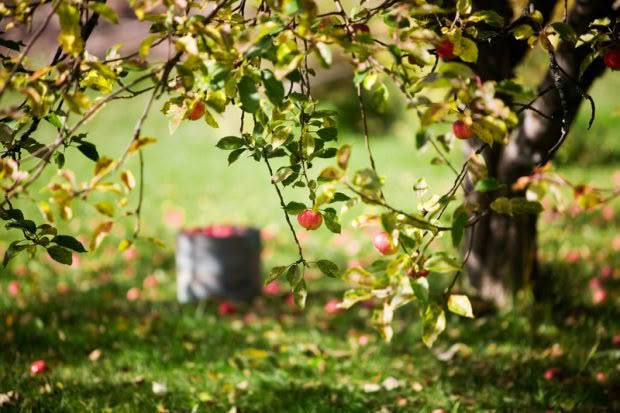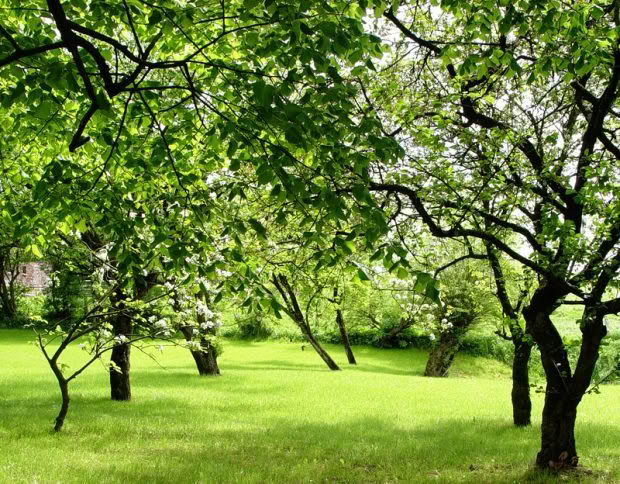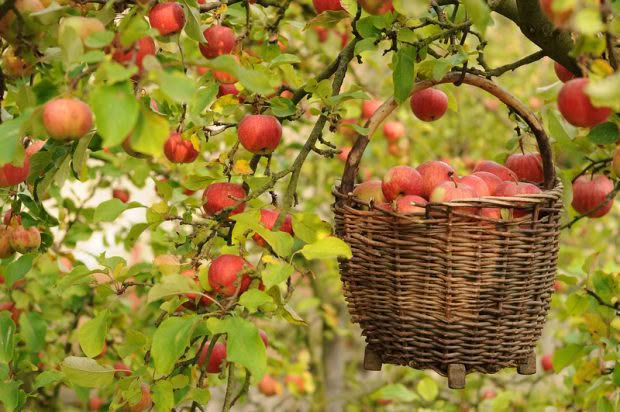How to design a fruitful home orchard

A well-designed orchard means you can be self-sufficient in fruit all year-round.
Words: Nadene Hall
When we think of orchards on a large scale, we probably tend to think of commercial orchards in neat rows with neatly mown grass underneath.
The home orchard is a different proposition and because you can have as many different types of fruit trees and berries as you wish, you can also go for a more organic philosophy than a commercial cropper.
THE PREPARATION
Before you begin, you need to do your homework. Kay Baxter’s book Design Your Own Orchard is a great, practical guide. In it, Kay outlines the preparation that is the key to good orchard design. These include:
• What is the soil like? Free-draining, heavy, water-logged, nutrient deficient? Kay recommends those who aren’t soil-savvy should get a soil test done, to find what is missing or over-represented
• Do you have a good water source? Is it of good quality, abundant, will there be problems with run-off?
• What is the aspect like? North-facing? South-facing? Exposed to all directions?
• What is the contour? Hilly, flat, rolling, high up, low down?
• What sunlight does it get? Sunlight plays a huge part in getting fruit trees to produce fruit, so Kay emphasizes this is one of the most critical parts of your homework.
• Where is the prevailing wind coming from?
• What shelter is in place, if any? Do you need to provide shelter, in which case do you need to delay planting your orchard for a year or two, to give shelter plants a head start? Alternatively, are you prepared to individually protect each plant?

The other questions to ask yourself concern your goals. What do you want to grow, are you into preserving, do you want fruit all year round, what is your budget, do you want animals in the understorey, what are your limitations?
IN THE ZONE
In permaculture, the orchard is in Zone 2; that is an area that is close to the house but not somewhere you need to go every day (unlike herb and vegetable gardens which are in Zone 1, right outside your back door).
If you have a number of choices for the siting of your orchard, bear this in mind, but if you are limited to just one or two sites, think about the questions above and try to find an area that is sunny, has shelter from strong winds and has free-draining soil if possible (although this can be catered to with choice of tree, rootstock and soil manipulation). Map out the space you have for your orchard so you have an idea of how many square metres you have to work with.
CHOOSING THE RIGHT FRUIT
You may love bananas but that doesn’t mean you can grow bananas, if your climate isn’t right. Even if your climate is right, you may struggle if your orchard is badly sited, so when you choose the fruit you want to grow, you need to be realistic about what you can have.
Choose the appropriate rootstock – you may want all dwarfing varieties but if you have a heavy soil or its very dry where you are, a deeper-rooting, more robust rootstock may be a better option for long-term fruit production and survival of your tree. However, you will also need to bear in mind the space you have to work with and how different sized trees will affect the sunlight on other areas of your orchard (and surrounding garden).
Decide on ripening times – if you want fruit from your orchard all year round, you need to consider what varieties will do best. Some are early bearers, some are late, some bear twice, some keep better than others. Then again, if you know you are always incredibly bush in June or out fishing for two weeks in January, choose varieties that fruit before and after that time; don’t give yourself added work and let all that fruit go to waste.
Know pollination requirements – many fruit trees are self-fertile but others aren’t. Make sure your have the correct pollinators for your chosen fruit trees. A reputable nursery will be able to assist you with getting it right.
TIPS ON PLACEMENT
• Check the rootstock you are using. The nursery that sells you the trees should be able to give you an idea of tall and how wide a particular variety will grow on different rootstocks, so you can leave enough space.
• If you have a problem with wind, consider planting your trees in a diamond pattern rather than in straight rows; straight rows allow the wind to funnel through, whereas a diamond pattern gives mutual protection.
• Do you think you’ll need to bring your tractor or ride-on mower into your orchard? If so, you need to consider its dimensions when you are laying out your planting pattern and leave turning space.
• Use pigtails and electric tape to layout your orchard, however if you like very straight lines, use something like a length of wood to get it just right.
• Deciduous trees tend to require colder temperatures, tolerate heavier soils and like windier spots, so put them on the south – south-west side of your orchard (or wherever the prevailing wind will hit first).
• If you want your orchard to include subtropicals, pick the most sheltered, still, warm, humid area, or alternatively put them in pots in a glasshouse or on the deck. Many will still produce if put in a large container.
ORCHARDS AND THE CITY
Just because you live in town and have a small garden, there is no excuse not to have fruit trees. Even apartment-dwellers can have some varieties; lemons, limes, kumquats, avocado, passionfruit, figs, blueberries and oranges will do well in pots (if you care for them and regularly water and feed).

If you have some garden space, espalier your fruit trees; buy dwarf rootstock and use the wall of the garage or a strong frame (this might exclude your boundary fence, as fruit trees can become very heavy).
Many varieties of fruit, from apples to pears to apricots, come in dwarf rootstock and will be perfect. To give you some idea of scale, Kay Baxter had 300 fruit trees on just half an acre; so there’s no excuse to be without fruit on a small property.
DESIGN YOUR OWN ORCHARD
By far the best orchard design book for New Zealand conditions is this book by Kay Baxter, compiled from her many years of experience working in organics. Kay brings her permaculture experience to her design tips, but even if you aren’t into permaculture, it’s all practical, sensible advice from an experienced home orchardist. The book also outlines Kay’s tips on choosing varieties of apples, pears, plums, medlars, persimmons, peaches, citrus, feijoas and more, plus she has a couple of sections for those who can have subtropicals in their orchard.
Love this story? Subscribe now!
 This article first appeared in NZ Lifestyle Block Magazine.
This article first appeared in NZ Lifestyle Block Magazine.
